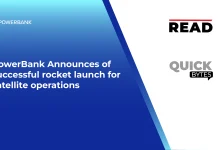In an intricately connected world of complex systems, a silent hero is working in secret to ensure the safety and security of crucial infrastructure. Critical Infrastructure Protection (CIP), is the shield that strengthens the security of society. In the passage of swiftly emerging threats, CIP stands as the warrior of defense, protecting the essential infrastructures that facilitate our lives.
So, get ready to dive deeper into the world where resilience, innovation, and unwavering commitment come together to safeguard our modern society.
What is Critical Infrastructure Protection (CIP)?
Critical infrastructure protection (CIP) involves protecting the essential infrastructure of organizations that require superior security This involves numerous industries, such as agriculture, healthcare, energy, food, and transportation, which require increased protection against cyber threats, natural disasters, and terrorist threats.
CIP strives to safeguard essential infrastructure across industries and ensure the protection of individuals, physical assets, and cyber systems. This comprehensive approach is integral to preserving economic stability, national security, and public safety.
A recent study by Extrapolate states that the global market for critical infrastructure protection is expected to expand at a compound annual growth rate (CAGR) of 6.21% to reach USD 172.32 billion in revenue by 2030. The statistics highlight the significant growth projected for this industry in the upcoming years.
Importance of Critical Infrastructure Protection (CIP)
Critical infrastructures are prone to cyberattacks and can highly affect global economies and societies. Thus, securing critical infrastructure is essential for accessing vital services and safeguarding high-value industries from cyber threats.
Critical infrastructure protection (CIP) plays a crucial role for various industries in safeguarding against cyber threats, physical attacks, and natural disasters. It ensures the reliable supply of energy, prevents disruptions, and safeguards against global supply chain vulnerabilities. It also prevents financial fraud, maintains trust in the financial system, and ensures the continuity of financial services.
Effective protection initiatives require robust associations between government and commercial entities, along with efficient management and implementation strategies. Addressing this concern, the U.S. Department of Health and Human Services operates a dedicated division known as the Division of Critical Infrastructure Protection. This division collaborates with public-private partnerships to safeguard vital infrastructure
Key Strategies for Effective Critical Infrastructure Protection (CIP)
Protecting critical infrastructure requires a multi-faceted approach that involves various strategies and collaborations. Some of the key ones are given below:
● Threat Assessment
A clear understanding of the threats that occur can help in implementing a proper solution for effective critical infrastructure protection. Conducting comprehensive threat assessments allows us to identify vulnerabilities and potential risks to critical infrastructure.
● Partnerships and Collaborations
Collaboration between government agencies, private sector entities, and stakeholders is crucial for effective critical infrastructure protection. It facilitates threat information exchange, risk reduction coordination, and addressing security challenges.
For example, CISA, the national coordinator for critical infrastructure security and resilience, has implemented information-sharing programs such as cybersecurity awareness month and partner tools, to promote resources and tools for partners.
● Information Sharing
With improved information sharing methods, various sectors can promote effective risk management and enhance understanding of critical infrastructure interdependencies.
● Risk management and Resilience
Implementing risk management practices and enhancing resilience are key strategies for protecting critical infrastructure. This involves assessing risks, developing and implementing controls, and monitoring results.
● Technology and Cybersecurity
Implementing the various technologies and cybersecurity protocols helps protect against cyber threats and ensure the resilience of digital systems.
● Skilled Workforce
Fostering a skilled workforce and bolstering readiness are essential elements in ensuring the efficacy of critical infrastructure protection. Training programs, exercises, and drills play a pivotal role in cultivating the required competencies for responding to and recovering from incidents
● Regulation and Compliance
Implementing regulations and standards that enforce security measures and ensure compliance is an important aspect of critical infrastructure protection. This includes establishing guidelines for risk management, security controls, and incident reporting.
For instance, the National Institute of Standards and Technology offers the cybersecurity framework to refine, clarify, and enhance the CIP processes.
Concluding Thoughts
In our interconnected world, critical infrastructure protection (CIP) is not just a concept but a vital necessity. As technology advances and threats evolve, ensuring the resilience and security of these essential systems become paramount. Through the implementation of robust risk management strategies and cybersecurity measures, we can strengthen emergency response capabilities and foster public-private partnerships.
CIP focuses on the security and resilience of critical systems essential for our society. It requires joint efforts from governments, organizations, and individuals to ensure a robust infrastructure. By implementing CIP strategies in the workforce, we can safeguard our present foundations and secure our future possibilities.
Browse More Posts:-
Baby Diapers Market
Contact Lenses Market
Drinking Fountains (Water Dispensers) Market
Ethernet Switches Market




